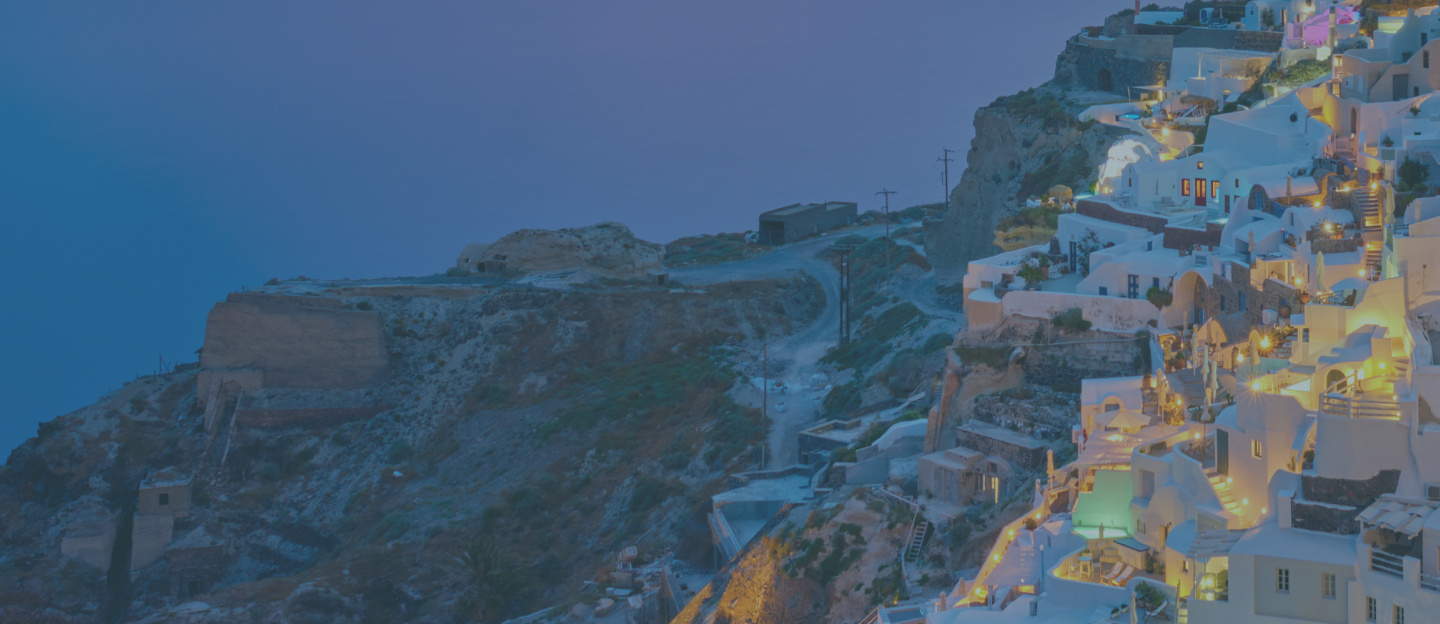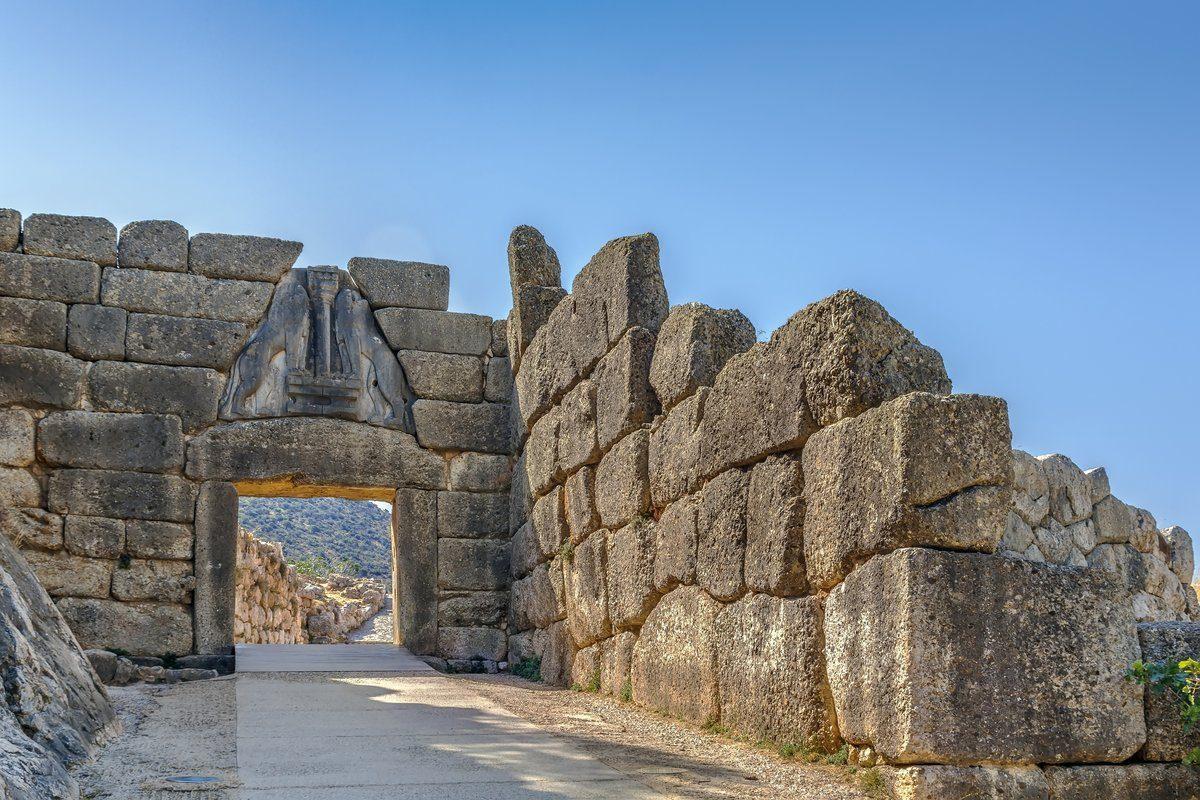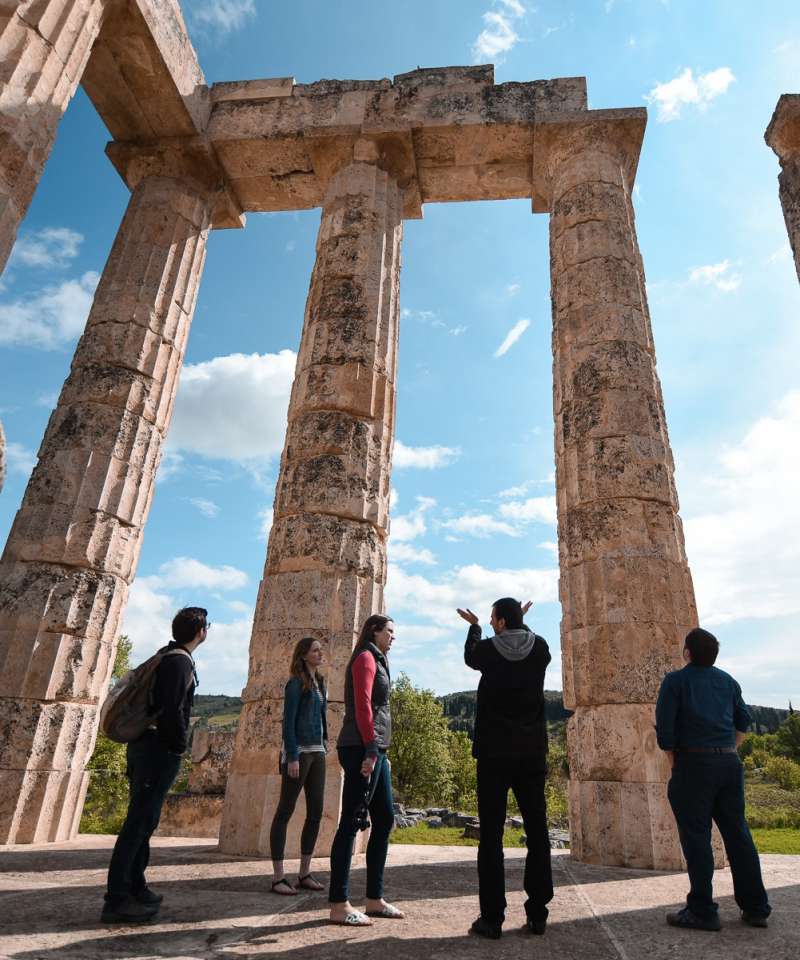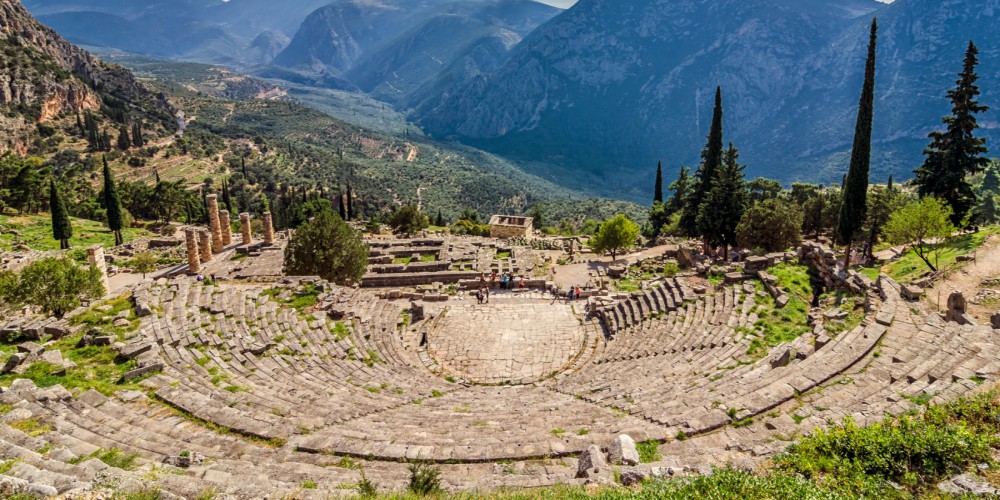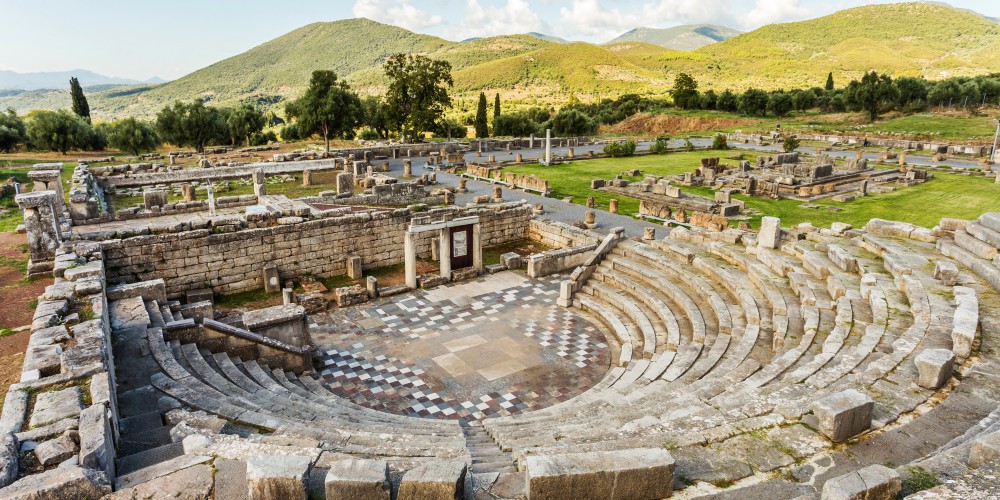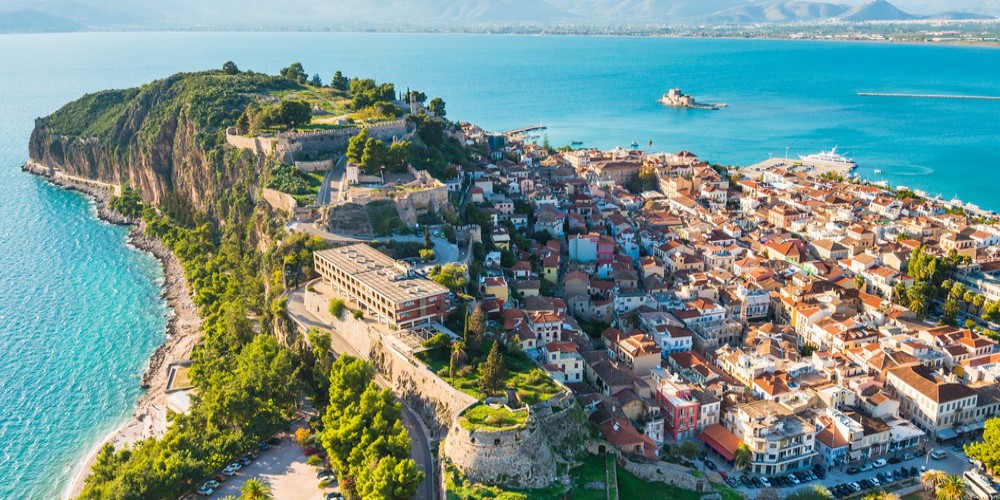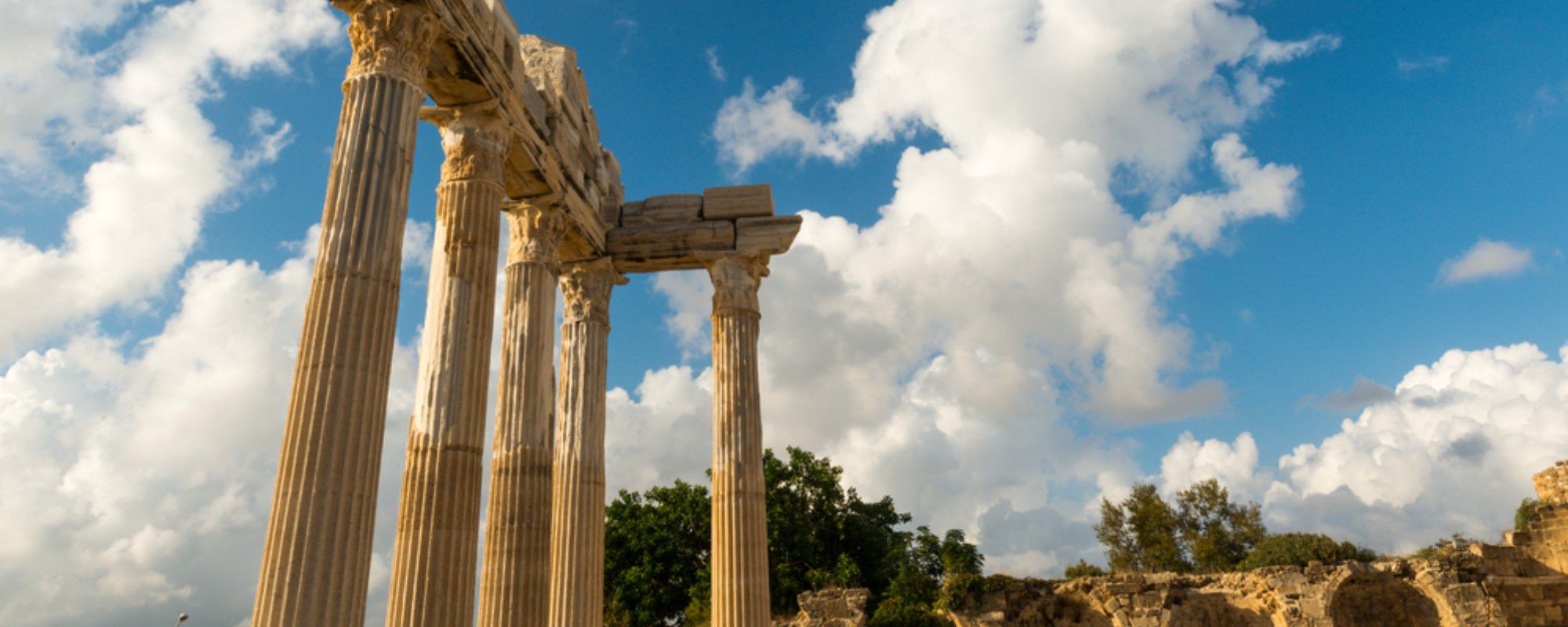
Ancient Corinth Guide: History & Mythology
Key Takeaways
- Ancient Corinth was strategically positioned on the isthmus connecting mainland Greece with the Peloponnese.
- The archaeological site of Ancient Corinth includes the remains of temples, theaters, the agora, the Roman forum, baths, and various other structures.
- The city's Acropolis, perched atop a hill, housed several important structures, including the Temple of Apollo.
- While not directly related to ancient times, the Corinth Canal is a significant engineering marvel in the vicinity of Ancient Corinth that was completed in the late 19th century and connects the Gulf of Corinth with the Saronic Gulf.
Only an hour away from the bustling city of Athens, Corinth is a Greek getaway destination that is easy to access, lively, and diverse.
Here, we have created the ultimate guide to Ancient Corinth, consisting of the best things to see and do in the city that combines history, culture, entertainment, historical facts, and mythological tales you can enjoy when visiting this fascinating destination on one of our Greece vacation packages.
We will dig deeper into the History of Corinth and will discover what Corinth was known for in ancient times as well as the History of the King of Corinth.
Corinth was one of the most important ancient Greek city-states in the whole region of Greece. With a history stretching across the span of around 8000 years, it is safe to say that it played an important role not just in Greek history but in world history as well.
The astonishing Corinth Canal
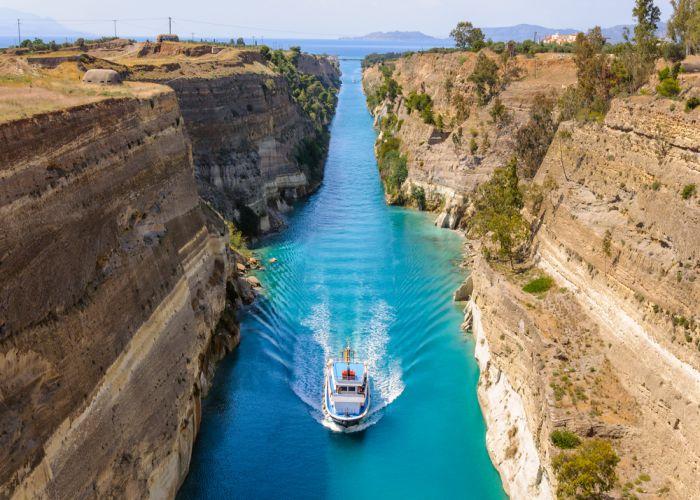
While approaching the city of Corinth in south-central Greece, the first sight you’ll stumble upon is the Corinth Canal.
The Corinth Canal consists of a narrow strip of land that connects Central Greece with the Peloponnese, while the canal brings together the Saronic Gulf with the Corinthian Gulf.
The strip of land extends to approximately 6 km, and it has been a significant point of reference for Greece since ancient times.
Because of its geographical position, the Corinth Canal was, in antiquity, a great naval, commercial, and cultural center. Today, it attracts thousands of visitors from all over the world who admire its great construction.
Besides the canal, visitors have the opportunity to appreciate the two submersible bridges located on both of the Canal's ends, which get immersed in the water every time a boat travels through it.
From the Canal, you can gaze at the ruins of the ancient diol in the area of Posidonia, offering the opportunity for visitors to admire the great work of ancient Greece.
Another reason that brings thousands of travelers to the Canal, especially the most adventurous ones, is the fact that it offers a great setting for extreme sports.
You can chase your adrenaline fix by jumping off the Canal’s bridge in a bungee jumping experience or even cross the canal with a canoe or a surfboard!
From ancient culture lovers to thrill-seeking adventurers, the Corinth Canal is a sight thoroughly worth seeing!
The archaeological site of Ancient Corinth
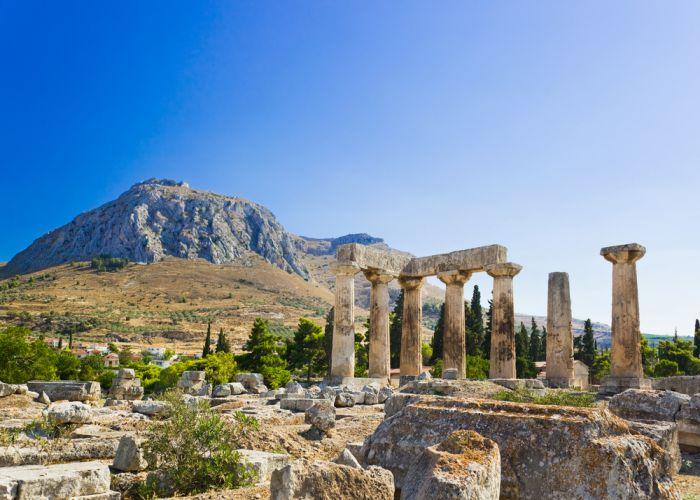
The ruins of Ancient Corinth - credits: Tatiana Popova/Shutterstock.com
Ancient Corinth, inhabited since the Neolithic times, was considered the richest city of the ancient world and its most important commercial hub until the rise of Athens.
Its large production of agricultural goods favored the development of the intense commercial activity, mainly towards the western Mediterranean, while the city reached its economic peak in the 7th and 6th centuries BC.
The ruins of Ancient Corinth give important insight into the region’s ancient civilization and architecture, with the monuments on site being many and exceptional. One of the most well-known and awe-inspiring monuments in the region is the Archaic Temple of Apollo.
The original temple dating from the early 7th to the early 6th century BC, was originally made of stone, bricks, wood, and clay. In the middle of the 6th century BC, a temple was erected in the place of the damaged original building in Doric order, consisting of monolithic Doric columns, of which seven remain standing.
Additionally, the Ancient Corinth Market, the Propylaia, the Peirini Fountain with its six openings, the Conservatory, the Corinthian Grand Theater with a capacity of 18.000, the wall of the ancient city, the relics of the Gymnasium and the Asklepieion, are the most important sights of Ancient Corinth you can marvel at.
The Acrocorinth
Another monument of great significance that excavations brought to light is the Acrocorinth. The Acrocorinth is a rock 579 meters above sea level, dominating the Corinthian region with Ancient Corinth built at its base. In antiquity, it was the Acropolis of Corinth and was used as a castle. Acrocorinth is one of the largest castles in the Peloponnese, with the perimeter of its walls reaching 3 km.
Although the castle as we see it today is a result of reconstructions and additions that took place during the Ottoman domination, most of its fortification took place in the 12th century during the Middle Byzantine era.
Due to its close proximity to the capital of Greece, you can indulge in an Ancient Corinth private trip from Athens, ensuring a comfortable and enjoyable exploration of the history of Greece.
Corinth’s fascinating museums
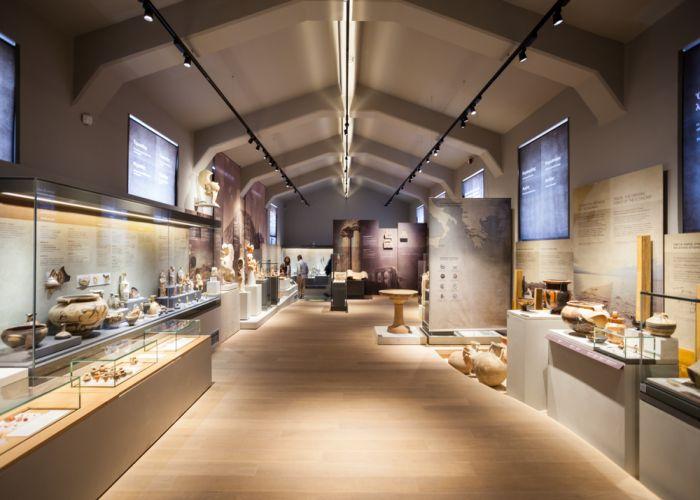
The Archaeological Museum of Ancient Corinth - credits: saiko3p/Sutterstock.com
It’s already clear that Corinth, in true Greek fashion, doesn't lack in history and culture. As a result, the city offers its visitors plenty of enthralling museums, with the Archaeological Museum of Ancient Corinth, The Environment Museum of Stymphalia, and the Historical and Folklore Museum of Corinth being our favorites.
The Archaeological Museum of Ancient Corinth was built to house the numerous objects brought to light by the archaeological excavation. It was erected by the American School of Classical Studies in 1932 and was expanded with the addition of another wing on the west side of the building in 1951.
The collections of the Archaeological Museum include findings of prehistoric times from the wider area of Ancient Corinth, Korakos Hill, as well as Zygouries, findings of Geometric-Archaic, Classical-Hellenistic, Roman-Byzantine, and Frankish era, findings from the Sanctuary of Asclepius, and the adjacent Early Christian cemetery of the city, a collection of Roman sculptures, Greek and Latin inscriptions in the Museum's patio, as well as evidence of the presence of the Jewish community in the Roman city, and findings from Corinthian comrades and sanctuaries, as well as the twin Kouros of the cemetery of Ancient Tenas.
Furthermore, the Environment Museum of Stymphalia is located in mountain Korinthia with an objective to highlight the codependent relationship between humans and nature, as well as their harmonious coexistence in the Stymphalia basin, bringing environmental awareness and providing information about the traditional technology of the region.
Last but not least, the Historical and Folklore Museum of Corinth was founded in 1976 to preserve and display folklore and historical material, as well as to inform the public about the region’s folklore culture.
The Historical and Folklore Museum of Corinth is located in the heart of Corinth’s city, next to Eleftherios Venizelos Square and behind the Corinthian Army Club, housed in a three-story building, which was donated to the Greek Ministry of Culture.
Its collection consists of exhibits dating from the early 19th century to the middle of the 20th century and includes traditional costumes from many regions of Greece, agricultural tools, and household utensils.
The natural beauty of the Corinth Area
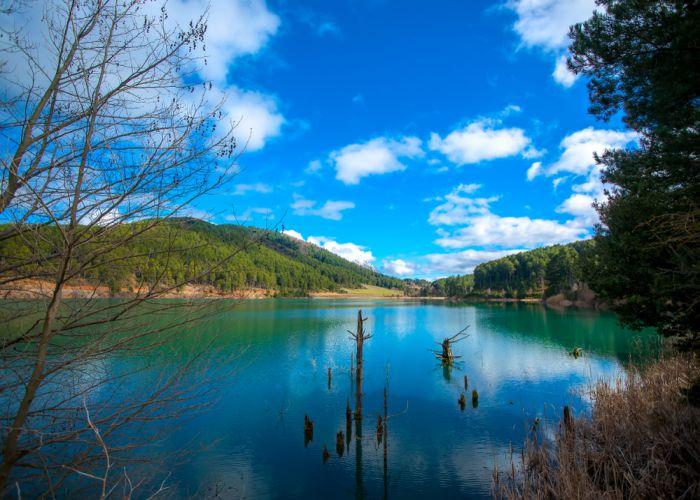
Amazing landscape view of Doxa lake - credits: imagIN.gr photography/Shutterstock.com
Apart from its rich heritage, Corinth possesses extraordinary natural beauty, with its thick vegetation and stunning lakes being a bright example of the luscious and wild nature of the area. If you find yourself in the greater region of Corinth, don’t skip on visiting at least one of its marvelous lakes.
Lake Vouliagmeni is located approximately 16 km northwest of Loutraki, in close proximity to the archaeological site of Heraion and the settlement of Perachora.
It has a maximum length of 2 km and a maximum width of about 1 km, while it reaches 40 m in depth. The lake connects with the Corinthian Gulf from a 6-meters canal, in the vicinity of which have been found a trace of human settlements of the Early Helladic period, suggesting that the area has been inhabited since the 3rd millennium BC.
One of the most stunning lakes in the Peloponnese is Lake Doxa, an artificial lake located in the Ancient Feneos of Corinthia. Its construction was completed in the late 1990s, and at the center of the lake, you can find the chapel of Agios Fanourios.
Lake Stymphalia is located on mountain Korinthia at an altitude of 600 m. It is best known in Greek mythology as the place that hosted the sixth labor of Hercules, in which Hercules had to confront the Stymphalian Birds.
Lastly, Rema ton Mylon (the Stream of Mylon) is a natural stream within which you can find ponds filled with pebbles, waterfalls, and wooden bridges that transport the visitors in a dimension where ultimate relaxation is an end in itself, a rural place where you get to feel the majesty of nature in your bones.
It is located near the Zoholis Plateau, with its dense black forest of pine trees, and offers a peaceful path for every visitor who loves walking in nature. In other words: it is as close to a utopia as one can get!
The Modern City of Corinth
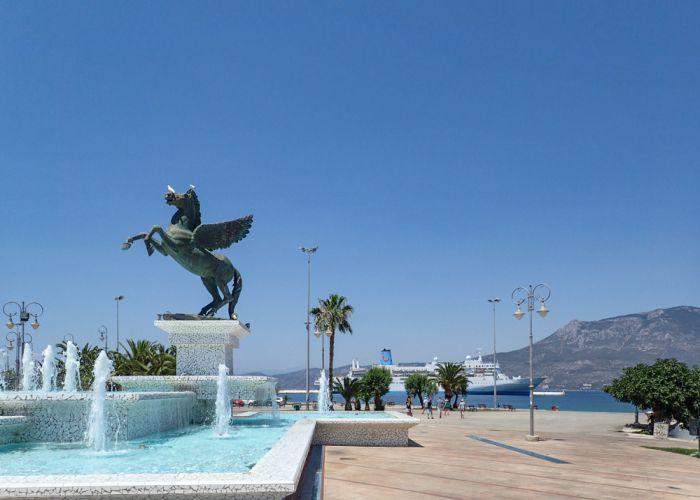
Pegasus, the emblem of the city of Corinth, situated in the center of the town - credits: By Lydia Vero
Just because we’ve waxed lyrical about the history of Ancient Corinth and the natural beauty of the region, it doesn’t mean that the modern city of Corinth is in any way or form inferior to its ancient counterpart.
On the contrary, not to be outdone, the city of Corinth, the capital of the prefecture, combines the charm and relaxing vibe of a provincial town with the plethora of choices in things to do and see of a bustling central city.
Founded as the continuation of Ancient Corinth, the city is located near the place where the Corinthian Gulf blends into the Saronic Gulf. The city is cleverly and beautifully mapped out, with wide roads, large sidewalks, and beautiful parks adding to its allure.
The sculpture of Pegasus, found in the square of Eleftheriou Venizelou, has become the emblematic symbol of the city, while Apostolos Pavlos Metropolitan Church stands as an imposing monument of Christianity.
A walk by the coast is an absolute must, where a wide selection of cafes and traditional taverns offer Greek delicacies for you to enjoy. In the summer months, you can also visit one of Corinth’s beaches, such as Kalamia Beach, where you can bask under the blazing Greek sun and dive into the refreshing waters of the Corinthian Gulf.
We know that Athens, the capital of Greece, along with the Greek islands, has stolen the thunder from Greece’s mainland. However, there is beauty to be discovered away from the chaotic vibe of the busy touristy spots. Don't neglect to enrich your stay in Greece with trips to less-known parts of the country, just like Cornith.
With parks, beautiful squares, a scenic port, and a selection of cultural and historical stimuli to keep you on your toes, Corinth has everything you want and then some! Follow our guide, and we promise that you'll experience Greece in a way only a few visitors do.
Are you still wondering why Corinth is so special? Here are 5+1 facts that will make you realize that this city is more important than you thought!
Things to do in Corinth
Apart from Cornith's archaeological interest, its modern city offers its visitors a variety of enjoyable things to do. While the coastal front, mainly of 'Agios Nikolaos' and 'Kalamia', is suitable for leisure and sports, the sidewalks inside the city function mainly as a commercial and economic center.
They have a length of about five building blocks, from Apostolou Pavlou to Dervenakion, and a width of two blocks, from Damaskinou to Kyprou Street.
By restricting car traffic from the center, the city gives priority to pedestrian transportation. The wide sidewalks are inviting for long walks and shopping sprees. They emphasize the existence of many shops in the commercial character of the center of Corinth, all of which you can take advantage of during your stay.
Additionally, if you visit Corinth during the summertime, you can go for a swim on its spectacular beaches. The main and most populous beach of Corinth, Kalamia beach, took its name from the many reeds -or 'kalamia' in Greek- that existed in the area before it was transformed into a tourist destination.
It is located near the city and is easily accessible following Georgiou Papandreou Street, which leads to the sea.
Kalamia is a beautiful, organized beach, which inside consists of fine sand and outside is covered, for the most part, by pebbles.
On this cosmopolitan and modern beachfront, the visitor can choose endless walks on the sidewalk, enjoy a pleasant environment in the many café-bars or dine in one of the delectable seaside taverns.
The beach is a fun meeting place for all ages for both locals and visitors, not only in the warmer months but throughout the year.
Corinth is one of the most ancient cities in Greece
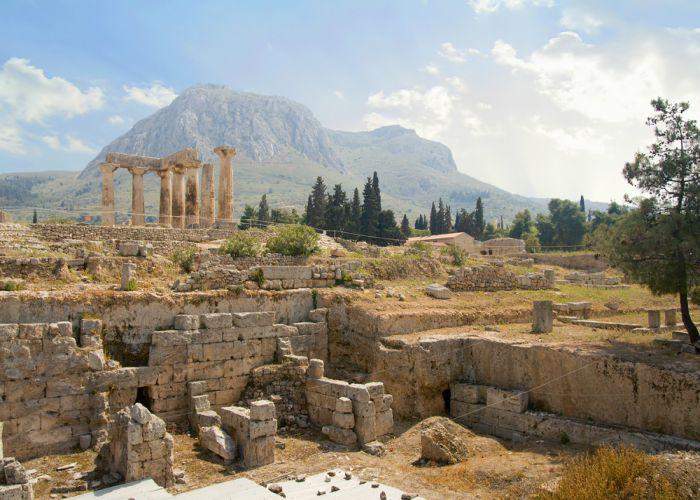
There is no doubt that ancient Corinth was one of the most important cities to be found around Greece and actively shaped the ancient history of the region, holding quite an important role in ancient politics.
Extensive archaeological research has shown that people have resided in this area since Neolithic times.
With artifacts dating back to as early as 6500 BCE, the settlement of Corinth gradually grew into a dominant trade center of Greece during the Early Bronze Age.
The era of Kings in Corinth resulted in a powerful state that was not only able to control its nearby territories but was also rich enough to raise the interest of its enemies.
The 8th century for Corinth brought the invasion of the Bacchiadae, a Doric clan that put an end to the succession of Kings and established an aristocratic regiment with them as the rulers of Corinth.
A new phase of construction and prosperity began and the population of the city-state rose up to 5000 individuals, quite a substantial number for the time.
Through the centuries, Corinth had been continuously inhabited, with a small pause during Roman times.
Therefore, the declaration of Corinth as one of the most ancient regions of Greece is more than fair, considering its long and rich history!
Corinth was the birth city-state of one of the Seven Sages of Greece
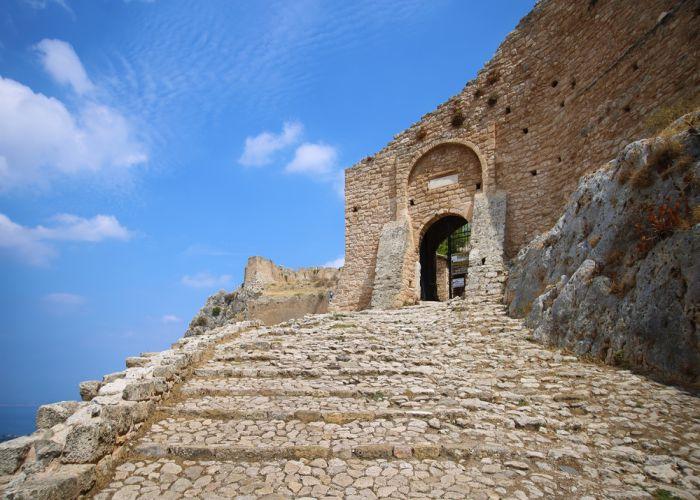
In Plato’s work Protagoras, we discover the listing of seven names after the title, 'The Seven Wise Men.'
According to tradition, these men were considered to be the wisest Greeks of all, who shaped their generation through their pioneering thought processes and advanced work.
One of them was Periander of Corinth, who lived during the 6th century BCE. He was the son of the first tyrant of Corinth, Cypselus, and got immortalized through a series of adventures that made him and the city of Corinth a formidable force.
During his rule, the city expanded and colonized faraway places, and the first coins of the city were struck. He even conceived and started a huge construction program to create a canal in order to connect the Saronic to the Corinthian Gulf.
After he realized the sheer scale of the project and faced the limit of the existing technology, he changed his plan by creating the Diolkos, a strip of land with appropriate infrastructure to drag ships and other vessels from the eastern to the western coast.
The unprecedented influx of money coming from tolls allowed him to invest in his city’s infrastructure, decorating it with lavish public buildings and temples, and spend even more as a patron of literature and philosophy.
Corinth had institutionalized sacred prostitution
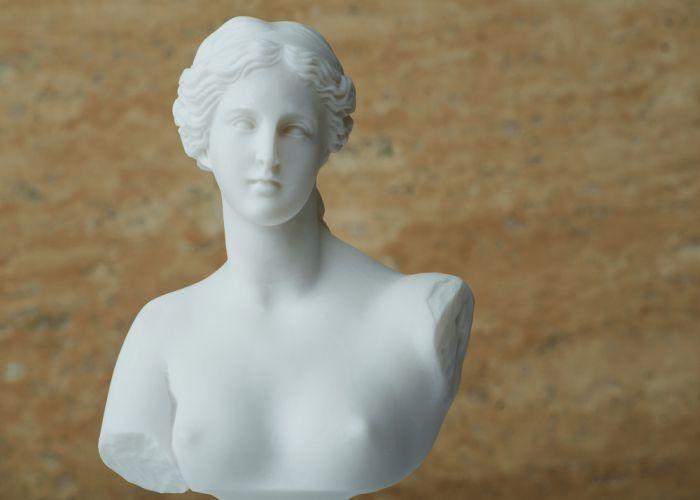
At the top of the imposing hill of Acrocorinth, there used to be a temple dedicated to the goddess of love, Aphrodite.
The temple was located right next to the mythical spring that, according to legend, Asopus gave as a gift to Sisyphus. This temple was renowned in the ancient world and was described by Strabo when he visited Corinth in 2 BCE.
According to him, the temple already had over 1000 slaves-courtesans, both male and female, who had dedicated their lives in the service of the goddess.
It was known back then that getting the services from such a courtesan was quite costly, and thus, a saying Strabo mentions, stated that: “The voyage to Corinth is not for every man.”
Stories of rich captains losing their jobs and ships for spending one night with a temple courtesan were numerous and known to every corner of the Greek world.
One really famous prostitute of the 4th century BCE was named Lais and charged high amounts for her services.
According to some sources, she asked Demosthenes 10.000 drachmas just for a night with her, an unthinkable sum of money considering the fact that an average day's pay was 1 drachma. She was so beautiful that even the famous painter Apellis hired her to pose for him in some of his paintings.
Corinth hosted the Panhellenic Isthmian Games

Corinth canal, -or 'isthmos' in Greek- the place that gave Isthmian Games their name - credits: EleniMac/Shutterstock.com
The Isthmian Games were one of the four Panhellenic Games that existed in antiquity. Just like the Olympic Games, athletes from all over Greece were eager to participate in the Games, honoring the patron god, Poseidon.
According to the legend, the founder of the Isthmian Games was Sisyphus himself, and an Isthmian Truce (just like the Olympian one) was declared before the start of the festival to ensure the safe passage of the athletes to Corinth.
The prize for these games were wreaths made out of celery and, later on, made out of pine.
During the 2nd century BCE, Romans were allowed to take part in the festival, and eventually, the games stopped after the decision of Theodosius I in the 4th century AD. The ancient stadium of Isthmia is still preserved right next to the temple of Poseidon.
Corinth was destroyed to the ground and refounded by the Romans
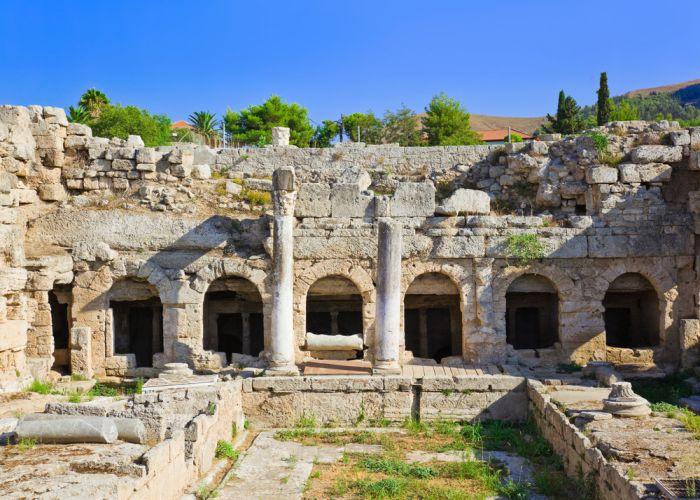
After the destruction of Carthage in 146 BCE, the Romans proclaimed to the rest of the world their hegemony and unquestionable rule. In Greece, the Achaean League reacted to the provocations of the Romans, and later that year, a decisive battle between those two parties happened outside of the city of Corinth.
Despite the minor victories of the Greeks, the commander Lucius Mummius vanquished the Greek army and continued by destroying to the ground, the city of Corinth. Additionally, he captured all the male population of the city and executed them on-site, while women and young children were sold as slaves.
The destroyed city was left in ruins for almost a century when Julius Caesar re-founded the city under the name Colonia Laus Iulia Corinthiensis (a colony of Corinth in honor of Julius) in 44 BC, before his assassination.
After several years, Corinth finally recovered, reintroducing itself as one of the most dynamic harbors of the Mediterranean, with a huge population of Greeks, Romans, and Jews.
Apostle Paul lived and preached in Corinth
It is believed that Apostle Paul arrived in Corinth in 49 or 50 AD and organized the first Church of Corinth, making it an Apostolic See. In Corinth, he met Priscilla and Aquila, who later on came to be two of the Seventy Disciples.
He lived and worked with them in the city for more than eighteen months, where he frequently visited and preached at the local synagogue.
The fact that he lived for that long in Corinth shows the presence of a well-established Jewish community of Corinth that allowed him to worship and preach in their synagogue.
Although two Epistles to Corinthians have been included in the New Testament, scholars claim that during his life, he wrote probably more than four, conveying the dynamic character of this new Church and his investment in spreading Christianity.
Sisyphus, the First King of Corinth
Probably one of the most interesting and by far one of the most influential figures of Greek mythology, Sisyphus and his toil-inspired authors and intellectuals of both the ancient and modern world.
From Homer, Plato, and Ovid to Albert Camus, Franz Kafka, and Simone de Beauvoir, his emblematic story survived through the centuries and even became part of modern pop culture.
His story even makes an appearance in Percy Jackson and the Olympians, helping Percy in the Fields of Punishment, while it is also mentioned in Lemony Snicket's: A series of Unfortunate Events! But who is Sisyphus, and what is so special about him?
Sisyphus was the son of the King of Thessaly Aeolus and Enarete -translating in Greek to 'the virtuous one.' He was the mythical founder and King of the city of Ephyra, which was later renamed Corinth.
As King, he succeeded in making the city an important trading center, and eventually, Ephyra prospered, but at a price. Sisyphus, with his brutal reign, managed to remain in power by outsmarting his opponents with numerous deceitful actions.
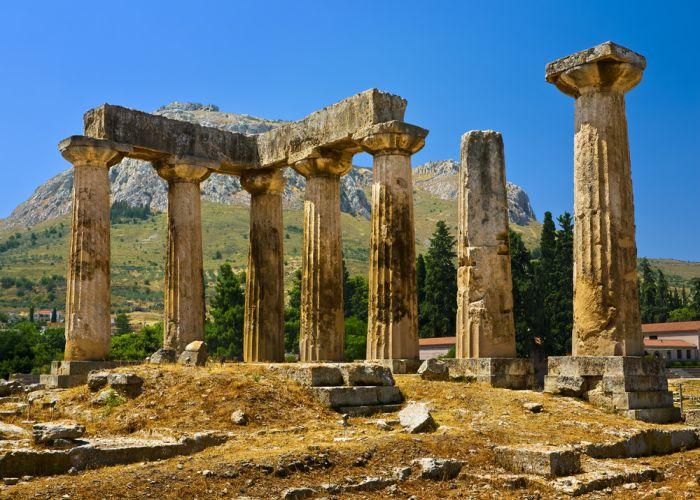
Mythology facts about Corinth
Even though Sisyphus had already raised the attention of the Gods, one particular event sealed his destiny.
Once, while being on his land in Corinth, Sisyphus witnessed the sight of a huge eagle abducting a young maiden. Stunned at first, he quickly realized that the majestic beast was Zeus himself, having taken the form of his sacred bird.
The unlucky young maiden was Aegina, the daughter of the river-god Asopus. In her time of need, she desperately screamed for her father's help. When Asopus arrived in Corinth, he asked Sisyphus whether he knew anything in regard to his beloved daughter.
Sisyphus agreed to confess to him everything he knew but on one condition: a new spring on top of his acropolis (Acrocorinth) for the watering of Corinth.

When Zeus realized Sisyphus betrayed him, he furiously ordered Thanatos (Death) to capture and lead him to Tartarus, the deepest part of the Underworld. Tartarus was known as the prison of Titans and as a place of divine punishment designed for the most wicked souls.
There, Sisyphus cleverly exercised all of his craftiness. By the time Thanatos showed him the enchanted chains of Tartarus, Sisyphus slyly tricked him into chaining himself by persistently asking him to demonstrate how the chains worked.
That way, he managed to escape to the world of the living, but with terrible consequences: with Thanatos trapped, no one could die. Therefore, the world got full of invincible warriors and undying old men! A huge turmoil was created, and Ares, the god of war, decided to intervene.
With no one dead, warfare and battles had lost their purpose, so he descended to the Underworld to free Thanatos from his divine chains.
When Sisyphus grew old, terrified of facing Thanatos again, he ordered his wife Merope to throw his body on the public square of Ephyra -or Corinth- after his imminent death. As a result, Sisyphus could not continue his journey to the Underworld and found himself trapped on the shores of the river Styx.
There, he pled to Persephone, the wife of Hades, to allow him to return to the mortal world to punish his disrespectful wife and arrange a proper burial for his body. After his refusal to return to the Underworld, the Gods sent Hermes, the messenger of the gods, to find him and escort him back in front of Hades.
As punishment for having cheated the Olympian Gods not once but twice, Zeus condemned Sisyphus to carry a boulder to the top of a hill, which closely resembled the one of his own city, Corinth.
The twist to his punishment was that Zeus enchanted the boulder to roll back down the hill every single time Sisyphus reached the top, resulting in a never-ending, maddening process.
Sisyphus' cruel faith was deeply inscribed in the minds of the ancient Greeks, constantly reminding them of the danger of the fury of the Gods.
Sisyphus became a symbol of interminability and eternal frustration. Polygnotus, the ancient Greek painter, vividly depicted his agony on the walls of Lesche at the sanctuary of Apollo in Delphi.
Final Thoughts
Next time you visit Corinth, spend some time thinking about Sisyphus on your way to Acrocorinth and learning from his mistakes. Find out how to create your own unique travel experience, or check out the rest of our Greece tours!
Frequently Asked Questions
What was Ancient Corinth known for?
What God did Ancient Corinth worship?
